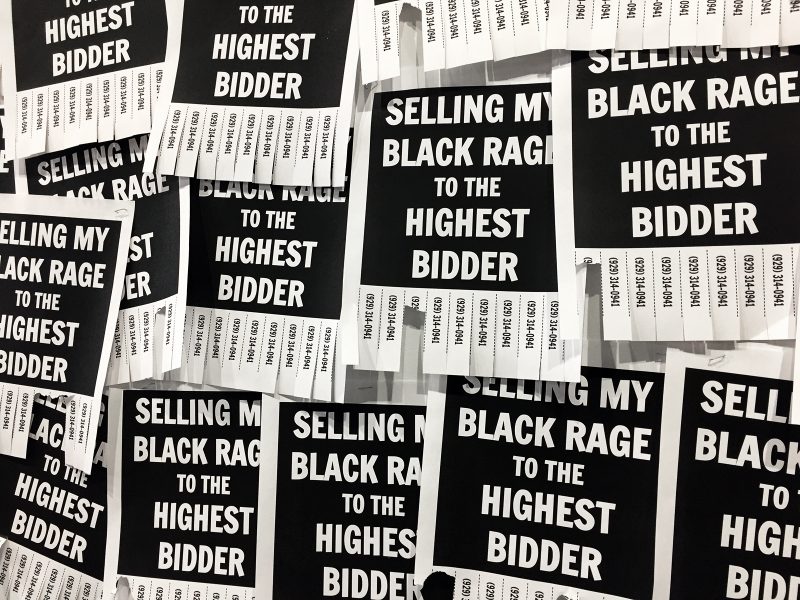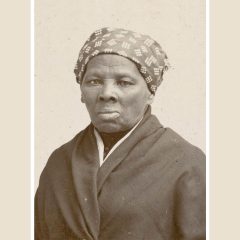I should preface what I am about to write by saying that, as long as we live in a capitalist society, and as long as the contemporary art world continues to be market-driven, I am in favor of black artists getting all of the money, all of the time. After all, if our (often uncredited) insights and interventions fuel what is best about the American culture machine, why shouldn’t we be the ones to profit from that machine?
Having said that, as both a maker and a scholar of black art, I often struggle with how the work of contemporary black artists sits within the (functionally) apolitical space of the commercial art fair. While on the one hand a more inclusive art market is urgently needed, it can at times feel that the responsibility to critically engage our society is left to those “included” while the old guard becomes increasingly complacent and toothless. In this regard, Volta NY 2018, which featured art by Tomashi Jackson, Troy Michie, Devin N. Morris, Christie Neptune, Kameelah Janan Rasheed, David Shrobe, Didier William, and Kennedy Yanko in that fair’s 3rd annual special curated section, left me with a case of cognitive dissonance from which I have yet to recover.
A study in contrast
When I learned that this year’s curated section would be organized by partners in art and life, Mickalene Thomas and Racquel Chevremont, I was thrilled. Thomas’s sumptuously-textured works apply blaxploitation aesthetics to the grand odalisque motif in a way that never fails to make me wish I had witnessed the 1970s. And when I read their list of selected artists, a veritable who’s-who of emerging black genius, I prepared to luxuriate in their collective vision. In particular, I was excited by their promise to “explore ideologies of collage.” What could be more timely than an approach to object-making so rich in associations to rupture and healing, radical difference and coalition?

Compared to the neighboring Armory Show, which is so padded with self-historicizing curatorial programs and special commissions that it almost passes for a pop-up museum, Volta feels lean and baldly mercenary. The much-touted one-gallery-one-artist model that distinguishes Volta NY from so many other commercial art fairs worldwide is as much about branding as it is about allowing individual artists to shine. And despite the global focus of the fair, which brings 85 galleries from some 45 cities worldwide to New York each year, the work on display feels disappointingly monovocal, as if every gallery in the world were trying to sell to the same politically dis-interested buyer. Whether this is indeed an indication of global commercial art trends, or just a reflection of what the rest of the world thinks American audiences in the age of Trump can handle, is a subject for another article. One consequence of this monotony was that, in order to access The Aesthetics of Matter (either physically or psychologically), viewers had to pass through a sea of work that looked as if it had been made to decorate an imagined wealthy collector’s guest bathroom.
Black bodies in space
Within this context The Aesthetics of Matter booth sat like a purple-carpeted oasis of serious inquiry in an ideological desert. Take David Shrobe’s assemblage portraits, which feature partial black figures, painted in formal attire, and surrounded — often to the point of obstruction — by salvaged shards of antique furniture and architectural debris. They appear both regal and desecrated, powerfully present and largely effaced, and in this setting felt like a reminder both of the global history of power and of the impermanence of worldly possessions. Devin N. Morris’s collages and photo installations, which also rely on domestic salvage, re-imagine stoops, basements, backyard and other marginal spaces of the built urban environment as surrealist stages for black (queer) self-fashioning and play.
In fact, much of the collage work featured in The Aesthetics of Matter seemed interested in the defiant occupation of inhospitable space. On one wall hung Troy Mitchie’s paper suit jacket, basket woven together from black and white print media clippings, and embellished around the neck with a hoop and chain. Nearby, Tomashi Jackson’s densely-layered wall hangings, with their competing fields of color, incongruous abstract forms and fragments of archival photographs, pushed the walls away and flirted with becoming sculpture. Around the corner, Didier William’s pitch-black figures, covered in swarms of eyes (like a thousand tiny cuts), spoke of both the invisibility and hypervisibility of black bodies in the public sphere. Kennedy Yanko’s large, athletic compositions, which combine draped curtains of poured paint supported by great heaps of (again salvaged) scrap metal, presented an elegantly improbable feat of cohabitation.

Facing Volta
In a sharp turn from the feasibly-marketable, the artists positioned at either end of the curated section addressed the surrounding art fair, and it’s network of associated galleries, head-on. On one side, relative-newcomer Christie Neptune showed work created during her ongoing residency at Brooklyn’s Smack Mellon exhibition and studio space — a video in which she sits (in an empty hall) manipulating a green velvet curtain, staged performance stills of the same, and a sculptural assemblage of the curtain and a mirror mounted on a chrome stand. For Neptune, who I spoke to at the fair, the curtain becomes a metaphor for the forces that shield white America from the realities of racial violence and inequality. As a special nod to Volta, and the increased visibility of inclusion in The Aesthetics of Matter, she also produced and exhibited a pair of counterfeit legal documents — an official-looking US patent for “The Colorline,” registered circa 1896 to “Jim Crow, Sr.,” and complete with barcode, gilded seal, and the signature of Uncle Sam himself. Though I overheard Neptune’s gallerist downplaying the significance of this late addition to a potential patron, I could not help but view her appeal to intellectual property and the aesthetics of documentation as a direct jab at the commercial art world and its privatization of culture.
The most overt challenge to the fair and its attendees came from Kameelah Janan Rasheed, whose black and white text-based installation comprised The Aesthetics of Matter’s closing gesture. In addition to showing the xeroxed collage work now familiar to attendees of the ICA’s 2017 Speech/Acts show, Rasheed covered the entire back wall of her booth with pull-tab flyers that read: “Selling My Black Rage to the Highest Bidder.” This was both a total embrace and a complete refusal of commodification — a spelling out of the uneasy pact between the black artist and the commercial art space. That the listed phone number directed callers to an automated bidding system was a final bittersweet flourish.










